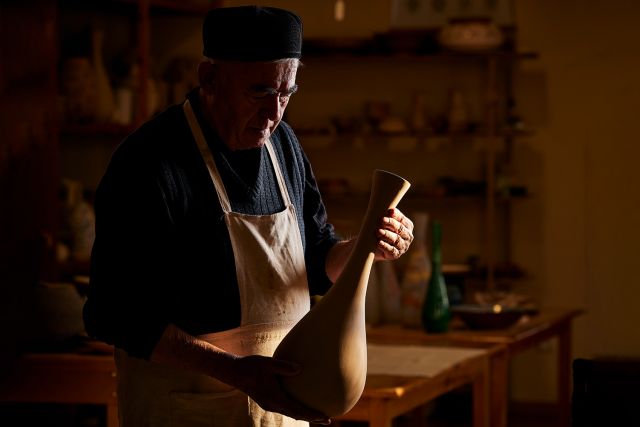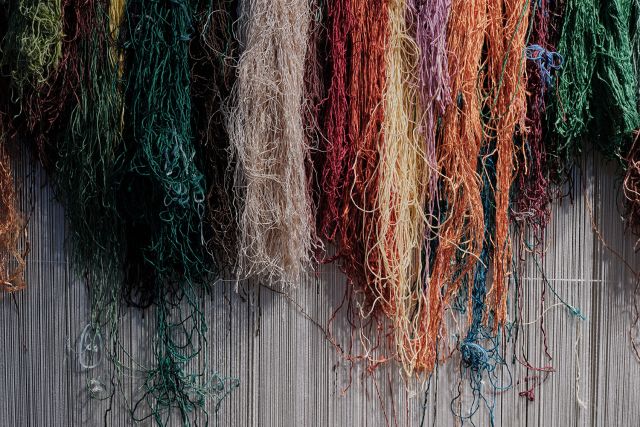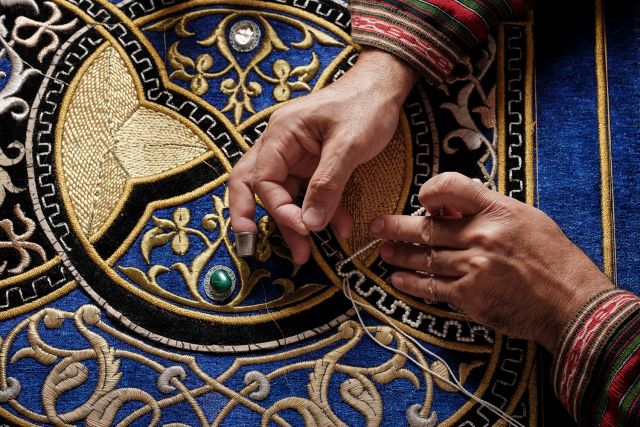One of the favourite motifs among Uzbek embroiderers is the pomegranate pattern. The pomegranate has long been interpreted as a symbol of life, abundance, fertility and love. The pomegranate bush is peculiar and original in the work of Madina Kasimbaeva. She has a keen sense of colour. For each new work she dyes threads herself.
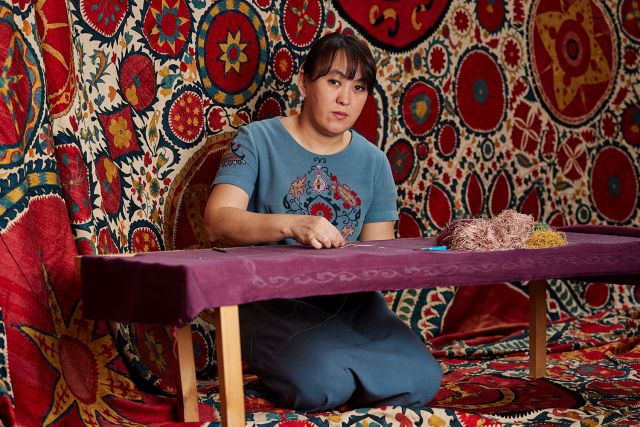

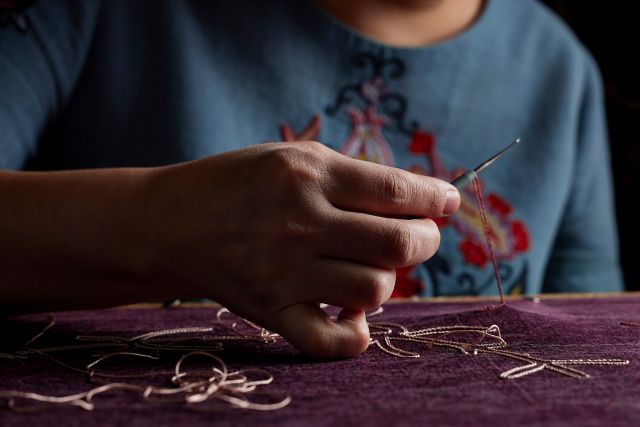
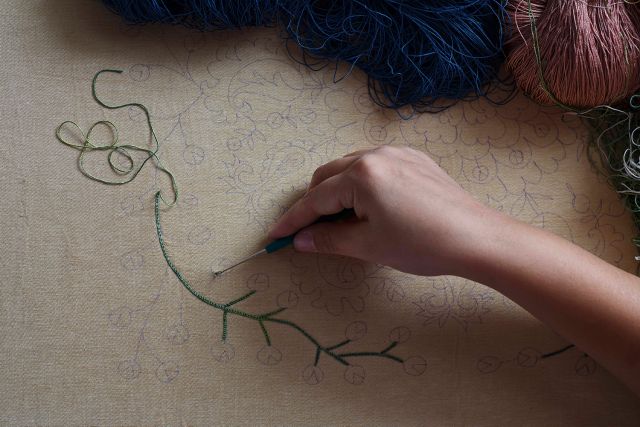
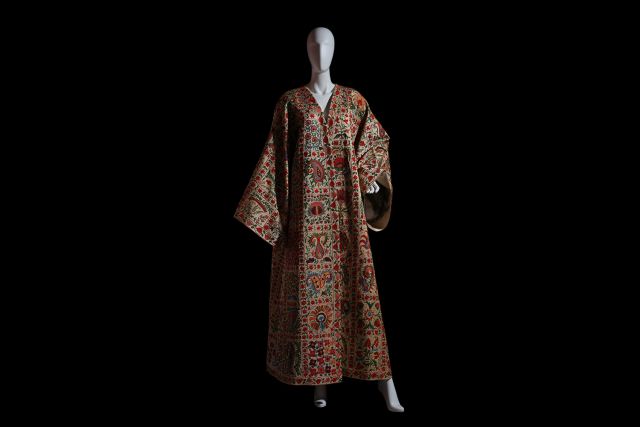
Madina Kasimbaeva
- Suzani by Kasimbaeva
- Embroiderer
- Tashkent, Uzbekistan
- Master Artisan
- Recommended by The Art and Culture Development Foundation
By appointment only
+998 901676704
Revamping classic patterns
- • Madina looks for modern avenues and uses for embroidery
- • She creates original ornaments from old samples of suzani
- • Some pieces may take years to complete
Madina Kasimbaeva founded Suzani by Kasimbaeva in 2006 and in less than two decades she has established herself as a creator of unique pieces sought after by fashion icons and global museums. She collaborates with local brands, sells her works to international collectors and creates attires for political leaders and popular artists. Madina started learning embroidery at a young age, and dedicated herself to the ancient art of suzani, studying regional schools, traditional patterns and techniques. Suzanis are large manually embroidered decorative textiles. They have been traditionally used as an important element of home decoration and played a key role in dowries historically. Today Madina also embroiders garments and accessories, combining traditions and innovation. She is always looking for ways to make the process more efficient without sacrificing the main principles of manual stitching and natural dyes.
Read the full interviewWorks
Photo: ©All rights reserved

Photo: ©All rights reserved
The artisan considers herself not only a traditional master, but also a designer of innovative direction, seeking to adapt to modern requirements and expanding the range of functional purposes for embroidery products. For her decorative cushions, she borrows a fragment of ornamentation from classical samples of Uzbek embroidery, sometimes adding new details to the patterns.

Photo: ©All rights reserved
Since ancient times, the tree of life or the motif of a vase with flowers was endowed with sacred properties. In Zoroastrianism, the motif of a vessel with a plant growing out of it acquires cosmological meaning, symbolising Lake Vourakasha, a symbol of all living things (the embodiment of a vessel, water) and the tree of life, Haoma, an all-healing tree with seeds of all plants of the world. Over time, the motif of a vase with flowers gradually lost its original meaning, becoming a widespread decorative motif whose multifaceted symbolism comes down to the idea of beauty of the real world.

Photo: ©All rights reserved
The Tashkent school is also represented by Pskent, located several tens of kilometres from the capital, and is distinguished by its vivid originality. This type of embroidery, called oy-palak, depicts a stylised picture of the universe, with sun and moon symbols.

Photo: ©All rights reserved
Embroidered chapans in the traditional style are a highlight of Madina Kasimbaeva's clothing collections. In this chapan one can see the patterns of Nurata embroidery, but in a new colour scheme, not typical of the traditions of the old masters.





